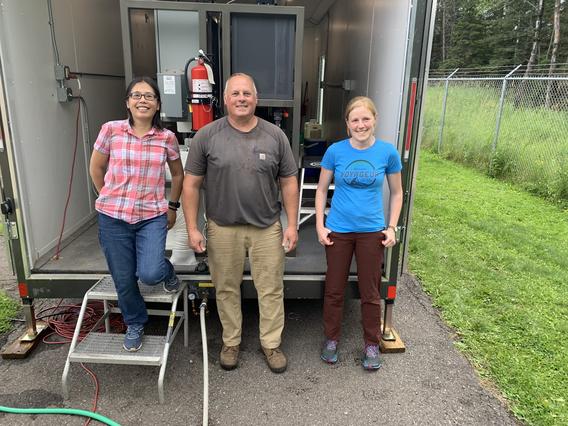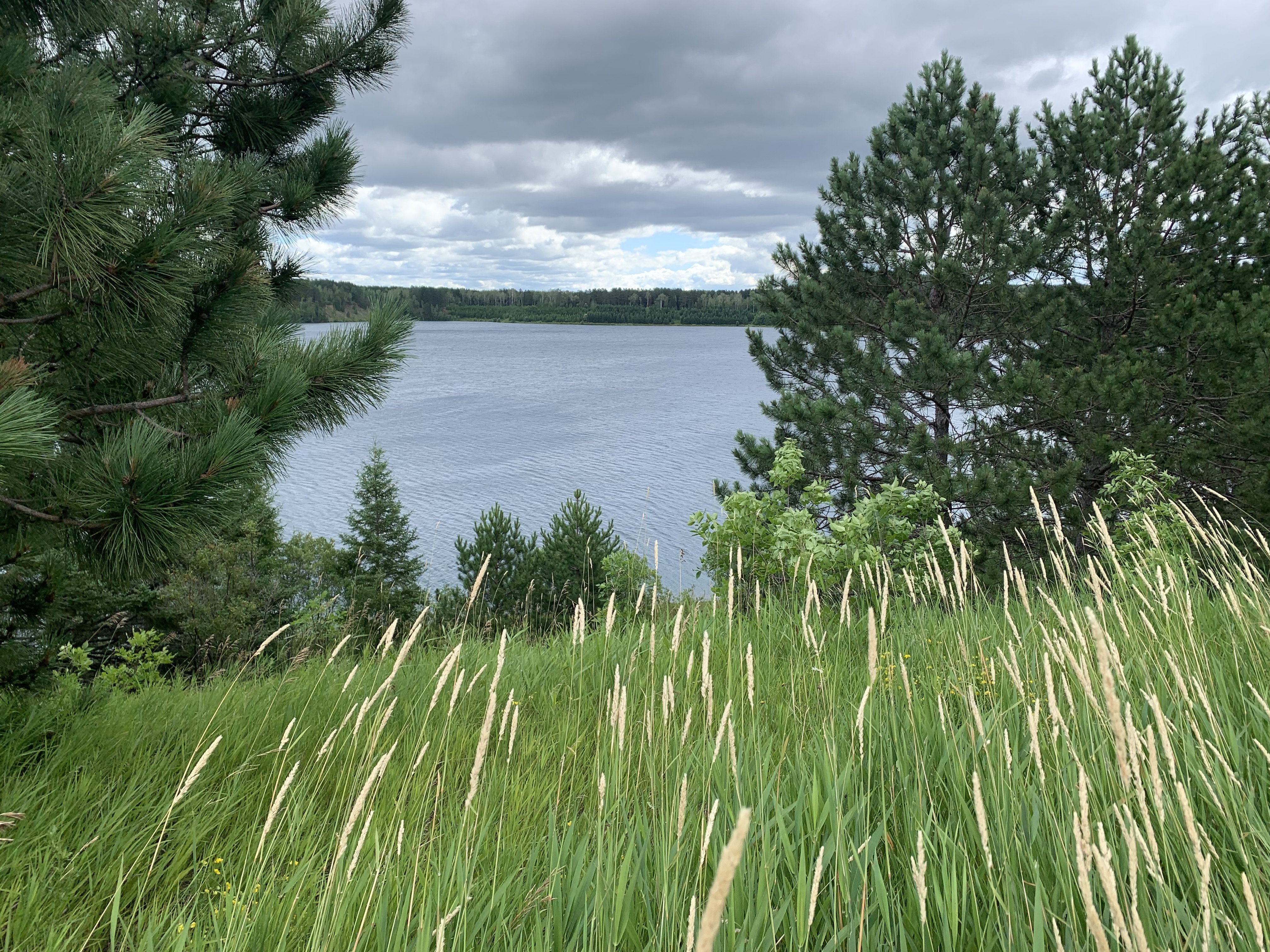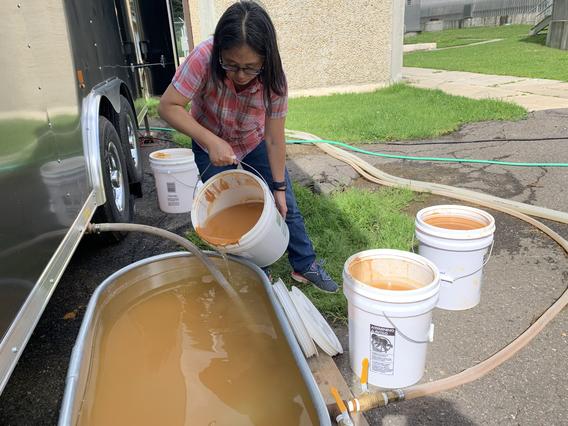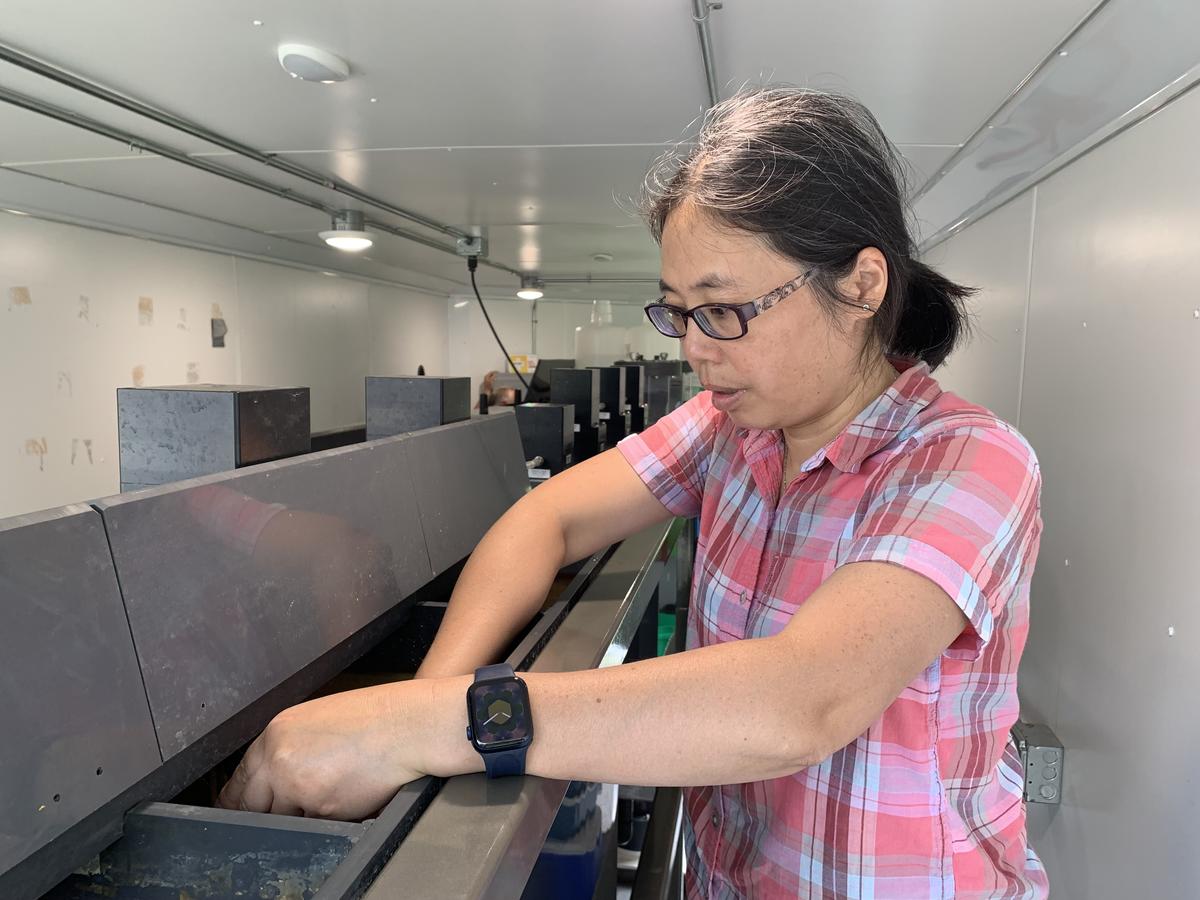A thick, hard mess was forming on the inside of scientist Mei Cai’s water tanks in the summer of 2020. In the tanks, deployed in a trailer to the wastewater treatment plant in Virginia, Minn., Cai and her NRRI colleagues were testing a new, cost-effective way to remove sulfate from water.
The scale build-up inside the tanks was like a hardened cement liner that plugged up the system and was difficult to scrape off. The material was actually the desired product of the reaction of barium chloride with sulfate in the water, transforming the dissolved sulfate into a solid precipitate so that it can be removed. They just didn’t want it adhering to the sides of the tanks.
What to do?
Enter trial number two: Summer of 2021, Grand Rapids, Minn., wastewater treatment facility. Here, the wastewater includes discharge from the local paper mill, so ferric chloride was added to remove the organics before the water was treated with the barium chloride.
“And we didn’t see any scale built-up in the tanks. None,” said Cai. “We figured it could be the addition of the ferric chloride because that was the only difference in the treatment process.”
Three’s a charm
Trial demonstration number three was underway in Aurora, Minn., this summer with three objectives.

One, reduce the sulfate levels in the wastewater and tap water. Two, test ferric chloride as a pretreatment to solve the scaling problem. Three, develop different “recipes” of the additives to achieve different sulfate reduction levels.
The team was successful. Sulfate levels were reduced to below 10 ppm. Small doses of ferric chloride reduced the amount of scale build-up and made it easier to hose off. And the barium chloride levels could be changed to achieve sulfate levels of 150 ppm, 100 ppm, 50 ppm and below 10 ppm.
“This will be useful for future users of the technology, to meet whatever standards they need,” said Cai. “And the less chemicals they need to add, the more cost effective the process is.”
Pit lake problem
Aurora residents get their drinking water from the St. James mine pit lake where the sulfate levels vary between 300 – 400 parts per million. The town’s wastewater, which includes stormwater runoff, has a sulfate level of 200 – 300 ppm.

But the pit lake is close to overflowing into the Partridge River, which hosts native wild rice. Minnesota’s wild rice sulfate standard, adopted in 1973 to protect this culturally important food source, is set at 10 ppm. It’s a level that can be achieved with expensive reverse osmosis, but NRRI received state funding to develop effective, low-cost technologies. Cai’s chemical precipitation process is one of four processes NRRI is developing so that a portfolio of solutions can meet varying situations.
Chemistry at work

Barium chloride quickly reacts with dissolved sulfate to produce insoluble barium sulfate that can be removed by flocculation and filtration. Ferric chloride is commonly used as a coagulant at wastewater treatment facilities. Concentration levels of both are managed to levels that are safe for equipment and the environment.
The chemistry at the heart of this chemical precipitation process was well established when NRRI began testing it in beakers at the lab bench in 2018. What’s new is adapting the technology to address lower levels of sulfate contamination, less than 300 ppm. The pilot demonstrations in northern Minnesota towns gave NRRI opportunities to refine the technology and showcase solutions that can help the state meet its sulfate reduction challenges.
This project is funded by the Environment and Natural Resources Trust Fund as recommended by the Legislative-Citizen Commission on Minnesota Resources.
